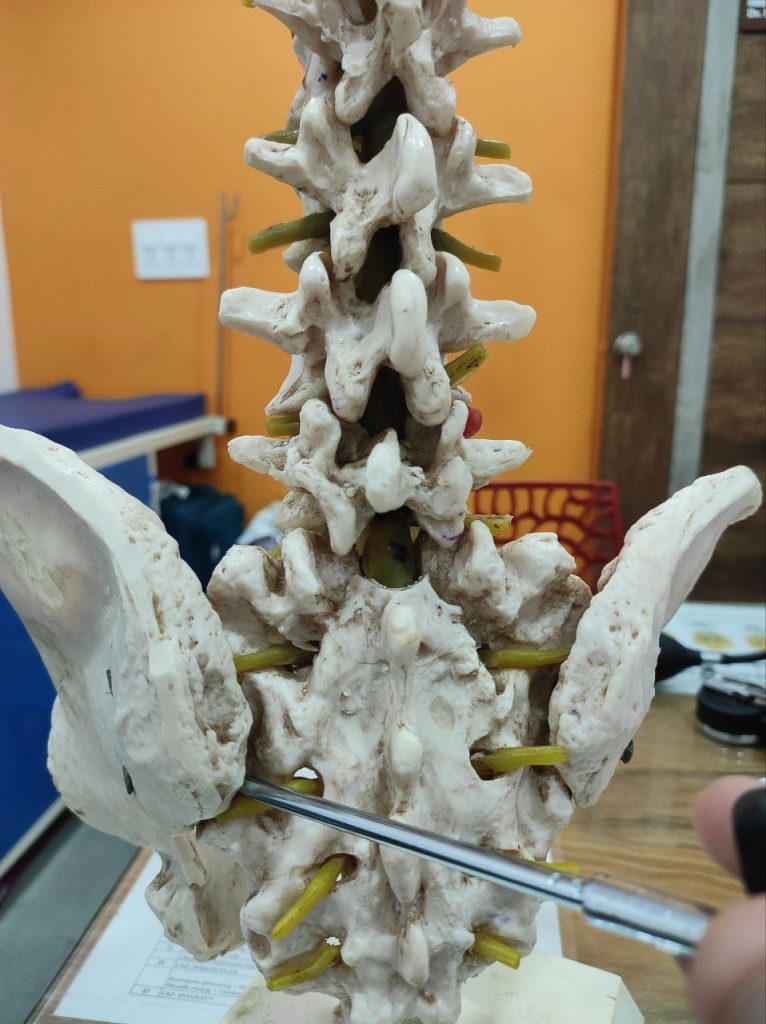Operating Time
Mon - Sat 5pm - 9pm
Address
Sadashiv Multispeciality Clinic, Rajeev Nagar Road, Vidyanagar, Hubballi
Contact Info
+91 93539 37425
Mon - Sat 5pm - 9pm
Sadashiv Multispeciality Clinic, Rajeev Nagar Road, Vidyanagar, Hubballi
+91 93539 37425

Do you feel pain when standing up from your chair? Do you experience stiffness in your lower back? Do you sense pain while turning in bed? These could be signs of a condition called sacroiliitis.
The sacroiliac (SI) joint is one of the major and large joints in our body. It connects the lower part of your spine (the sacrum) to your pelvis (the ilium). This joint is crucial because it transfers the entire weight of your upper body to your legs, allowing you to walk, run, and stand. Even though the sacroiliac joint is relatively immobile compared to other joints, it still provides essential stability and flexibility to your lower back.
Sacroiliitis occurs when this joint becomes inflamed. This inflammation can result from various causes such as repetitive stress from activities like bike riding on uneven roads, physical trauma from accidents, age-related wear and tear, and in rare cases, genetic conditions like ankylosing spondylitis or even cancer. Surprisingly, sacroiliitis is found to be responsible for 40% of the back pain patients visiting hospitals.
Common symptoms of sacroiliitis include:

For most people (90%), sacroiliac joint pain is mild and subsides with a short course of pain medication (3-5 days). After this initial treatment, maintaining proper posture, engaging in back-strengthening exercises, and avoiding known triggers can help prevent a relapse.
For the remaining 10% of patients, pain can persist and may be resistant to standard treatments. These patients may require more intensive, multidisciplinary pain management, including physiotherapy and medical interventions.
Sacroiliac Joint Injections with Steroids: This is an outpatient procedure performed with ultrasound or C-arm guidance. It has excellent results and a high level of safety and effectiveness according to medical literature. The injection helps reduce inflammation and pain in the joint.
Sacroiliac Joint Denervation Procedures with Radiofrequency Ablation: For patients who do not respond to steroid injections, cooled RF ablation can provide relief. This procedure uses radio waves to generate heat and “deactivate” the nerves causing pain, offering long-term relief when performed by skilled professionals.
Sacroiliac Joint Fusion Surgery: In the rarest cases, surgery may be necessary to fuse the joint, providing long-term relief from pain. This is typically considered only when other treatments have failed.

If you suspect you have sacroiliitis, it’s important to consult with a doctor for a proper diagnosis and treatment plan. Early intervention can help manage symptoms effectively and improve your quality of life. Remember, maintaining a healthy lifestyle with proper posture, regular exercise, and avoiding activities that strain your back can go a long way in preventing and managing sacroiliitis.
Subscribe to get the latest posts sent to your email.
We provide compassionate, comprehensive care for patients with chronic pain and life-limiting illnesses. Our mission is to enhance quality of life by addressing physical, emotional, and spiritual needs. Our multidisciplinary team of doctors, nurses, and counselors collaborates to deliver personalized care plans. We offer comfort, dignity, and support through every stage of illness, ensuring patients live their lives to the fullest.
For more insights and information on chronic painful conditions, subscribe to our newsletter.
Informative article
Thank you mam
Very useful information sir.As many people suffer from lower back pain and neglect it ,they ll be benefited from ur efforts sir.
Thank you Shraddha